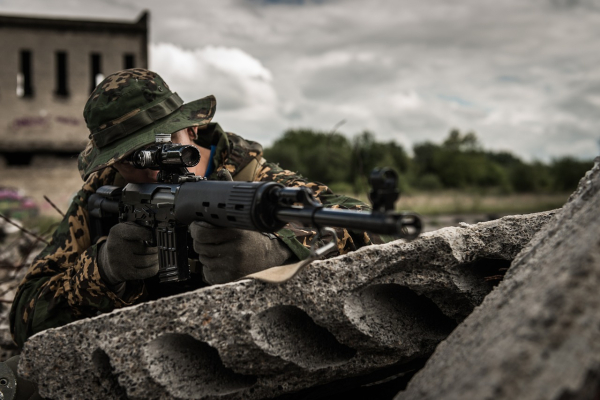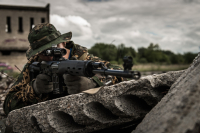In March 2024, the United States Army showcased the potential of integrating humans with robots, demonstrating how drones, robotic combat vehicles, and autonomous systems can change the face of contemporary conflicts. This project is an example of how innovations can significantly impact the efficiency of operations while simultaneously reducing the risk to soldiers.
Innovation at the Service of Security
The experiments conducted as part of Project Convergence focused on testing the integrative abilities of advanced systems, such as Ghost-X drones and robotic vehicles armed with heavy machine guns. Autonomous technologies, such as four-legged dog-like robots, were used for reconnaissance tasks, providing soldiers with valuable information about the battlefield situation without directly exposing them to danger. Gen. James Rainey, leader of the Army Futures Command, emphasizes that the integration of these technologies is key to minimizing losses and maintaining a tactical advantage over the opponent.
Challenges on the Path to Innovation
Despite optimism and clearly defined goals, Project Convergence sheds light on the challenges associated with implementing modern technologies on a large scale. From cybersecurity threats and challenges in communication between systems to the need for soldiers to adapt to working with new technologies. According to Joseph Welch, director of the Army's C5ISR Center, outdated procurement procedures pose a significant obstacle to the rapid implementation of innovations, necessitating the redefinition of acquisition processes and budgeting.
The Future Direction - Integration and Adaptation
Considering the funding allocated in the fiscal year 2025 budget, it is clear that the US Army is determined to further develop and implement integrated human-machine formations. This breakthrough moment could define future successes on the battlefield, placing technology and innovations at the heart of military strategies. Project Convergence not only demonstrates technical capabilities but also serves as a platform for testing and refining tactics that will be applicable in real conflicts. The pursuit of technological integration and adaptation to new forms of conflict is not only a response to changing threats but also a testament to the evolution of strategic thinking in the defense sector."






